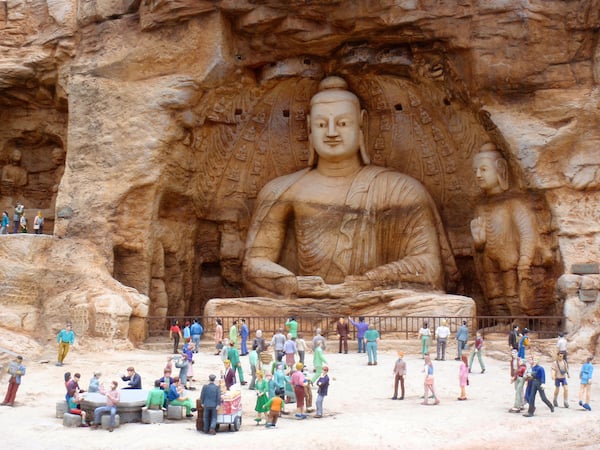Art & Exhibitions
See Ancient Relics From Dunhuang Grottoes Before It’s Too Late

Photo via: Famous Wonders

Lorena Muñoz-Alonso

The Hong Kong Heritage Museum has launched the exhibition “Dunhuang—Untold Tales, Untold Riches,” exploring the priceless legacy of Dunhuang’s ancient grottoes, one of China’s most important cultural relics.
The exhibition includes over 200 original artifacts discovered in the caves, as well as replicas of three caves, decorated in the span of three different periods: from the year 420 to around 1200, when the Mongols occupied the area.
The original Dunhuang caves—also known as the Mogao caves—were created in the fourth century as meditation cells, carved out from the cliffs that descend into the Gobi Desert by Bhuddist practitioners. Most caves have a central altar with a large Buddha statue, two standing bodhisattvas sculptures, and murals depicting Buddha’s three lives and, occasionally, portraits of donors who funded the works.
According to the South China Morning Post, the reputation of Dunhuang as a sacred site grew across the centuries, attracting master craftsmen from other areas of China and Central Asia, who added frescoes and statues. Monks, both Buddhist and Taoist, were reputedly living in this remote spot until as recently as the 1930s.
The caves thus chart the development of Chinese art for over a thousand years, and their multicultural additions are a testimony to the fluidity of China’s cultural identity.
But the caves have not only evolved over the centuries, they have also suffered neglect. Many of the frescoes held within them have been damaged by graffiti. To preserve the site and its artworks, the Dunhuang Academy now strictly controls visitor numbers and the time that they are allowed to stay inside the caves. Doors and padlocks have also been introduced.